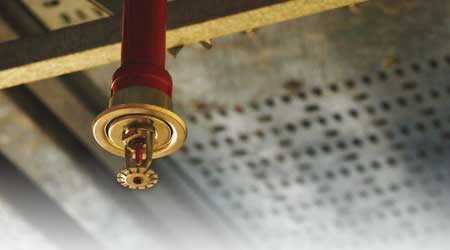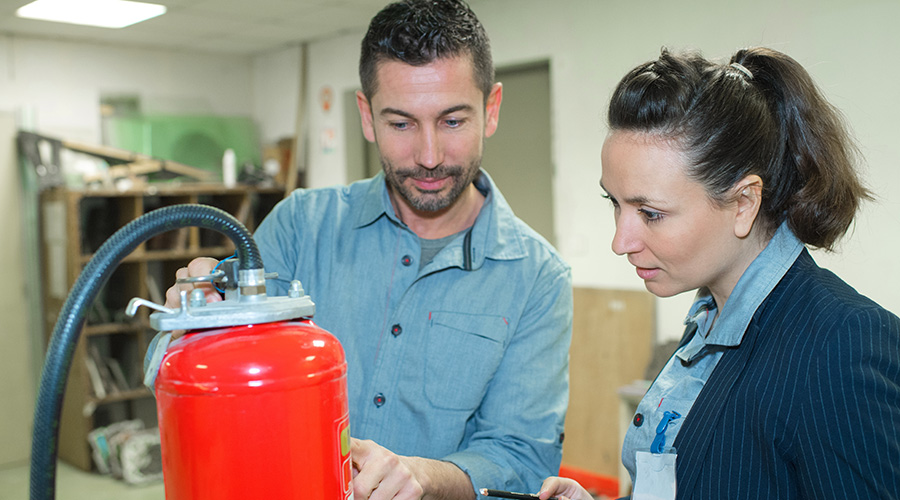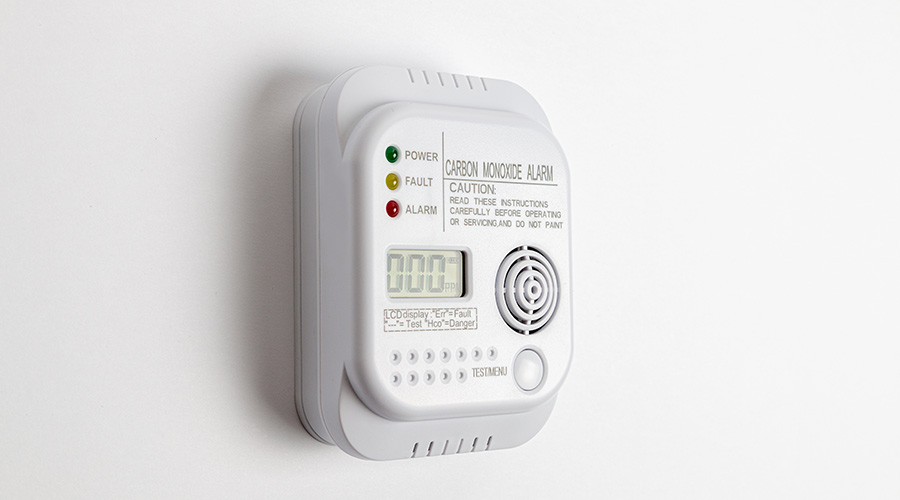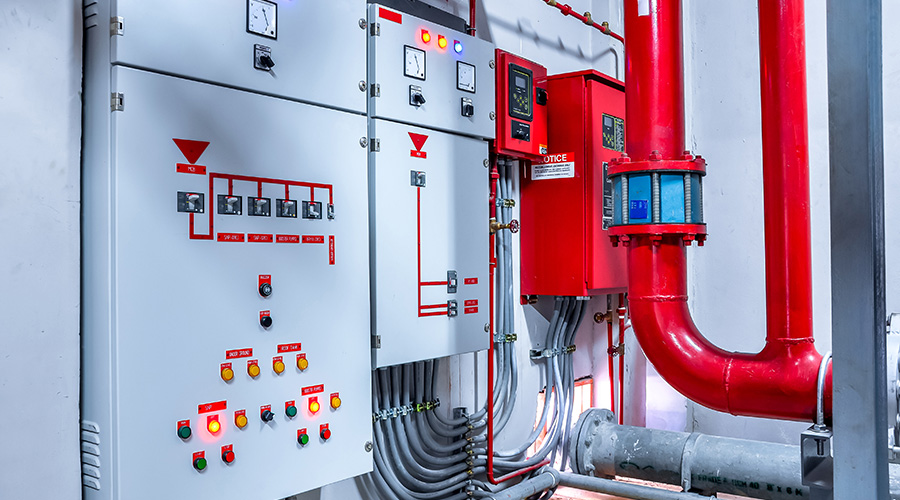Know The Difference: Wet Pipe vs. Dry Pipe Fire Sprinkler Systems
Corrosion can be caused by different factors, depending on the type of fire sprinkler system.
Wet pipe systems are filled with pressurized stagnant water. In a steel (or iron) pipe filled with truly stagnant water, the concentration of dissolved oxygen in the water is quickly consumed by the cathodic corrosion reactions and biological oxygen demand (if any). Within a few weeks of system fill, the concentration of dissolved oxygen is effectively zero. Because the reduction of dissolved oxygen is the controlling cathodic reaction in waters with a near neutral or basic pH, once the dissolved oxygen concentration drops to low levels, the corrosion reactions effectively stop. Theoretically, a six-inch steel pipe stub that was 1) filled with potable water, with no air gaps, and 2) capped on both ends with an air tight seal, and 3) buried in the Gobi Desert, with no external corrosion possible, could be dug up in 1,000 years and have little or no wall loss, and would remain filled with smelly water.
Installation and operation of sprinkler pipes is more complex than our theoretical scenario. Periodic system flow in accordance with NFPA 25 requirements leads to the re-introduction of oxygenated water that re-starts the corrosion processes, until the dissolved oxygen is consumed. Typically, the infrequency of these water flow events does not significantly affect system longevity. Rather, the more common problem is attributable to original system installation. Air pockets are commonly created during system construction. These are difficult to remove during system fill. If air pockets exist, they tend to provide a continuous supply of dissolved oxygen to the water near the air-water interface. Typically, the presence of an air pocket will lead to on-going cathodic reactions where the dissolved oxygen is available. The anodic reaction (ionization and dissolution of iron atoms) occurs just beyond the cathodic cell established by the air pocket. Highly localized and aggressive corrosion conditions can be established that lead to rapid through-wall pitting and perforations. This is probably the most common form of corrosion failure in wet-pipe sprinkler systems.
There are three possible fixes for air-pocket driven corrosion:
1. Identify locations within the system where gasses are likely to collect and try to eliminate air-pocket collection points. These would be geometrical high spots in the system where gas bubbles would tend to collect: e.g., a location where two pipe segments are angled toward one another to create a high spot, at the top of a capped riser pipe, or at an upwardly sloped dead leg.
2. If you cannot eliminate air-pocket collection points, automatic air vents can be installed at those spots. The vents “burp” the system and remove air to allow complete system fill. As noted earlier, if all of the air is removed from the system and the system is completely filled with water, then once the dissolved oxygen concentration is depleted, corrosion reactions will effectively stop.
3. Recently, a new nitrogen purging technology has been introduced to the wet-pipe market. The technology attempts to purge the piping system of air with nitrogen before filling with water. The theoretical concept is to displace and remove oxygen from the system, so that gas pockets trapped within the system do not contain oxygen — and therefore there is no source for dissolved oxygen to continue corrosion. It is a sound theory — but the verdict is still out on actual application. For this technology to be successful, the nitrogen purge must be successful in completely removing oxygen from all parts of the system including the gas trap locations. It is unclear whether that can be practically accomplished in all (or any) systems. Bubbling nitrogen through the system once it is filled with water is unlikely to be helpful. The nitrogen bubbles introduced would have to diffuse through the system to all of the gas collection points and displace the existing oxygen, which is unlikely to occur.
Dry pipe systems
By design, dry pipe systems are intended to be filled with air. Corrosion requires water, so no water, no corrosion. In actual application, water collection is a problem in dry pipe systems. There are two primary sources of water: 1) condensation from moist air that collects at system low points, and 2) water that gets trapped in the system during system flow testing at water collection points. If there is a pool of stagnant water surrounded by air, the effective corrosion rates can be very high. Through-wall pitting is a common failure mode in dry pipe systems. Despite the requirements of NFPA 13 8.16.2 Drainage — which states, “All sprinkler pipe and fittings shall be installed so that the system can be drained,” and further states, “In dry pipe system, branch lines shall be pitched at least ½ in. per 10 ft (4 mm/m), and mains shall be pitched at least ¼ in. per 10 ft (2 mm/m) in non-refrigerated areas” — complete system drainage without water capture points is difficult to achieve in practice. In particular, mechanical coupling gaskets can be water capture points independent of pipe pitch, depending on how they were installed.
There are several possible fixes for water capture corrosion in dry pipe systems:
• Fill the system with dry air or nitrogen. Dry air or nitrogen with little or no humidity are less likely to condense water during system temperature variations.
• Recently, the use of nitrogen purging or nitrogen as the supervisory gas (nitrogen inerting) has become more commonly offered solutions. The theoretical concept is straightforward: Displace the oxygen from the dry-pipe sprinkler system. No oxygen in the pipe gas, and the corrosion rates at water collection points will effectively stop once the dissolved oxygen in the water is consumed. The verdict is still out on whether these systems work in practice. There are several challenges to the actual application or this technology: How pure is your nitrogen? How do you displace all of the air with the nitrogen flow? How much oxygen must be removed to effectively stop corrosion rates?
• Install auxiliary drain valves at water capture points, and drain those valves regularly.
• Inspect your system and make sure that the piping is properly sloped and that all of the slopes drain to a single location. Don’t have one pipe sloped towards another to create a water capture point.
Bryan Templeton, PhD, PE, is technical lead material science, senior metallurgical/materials engineer at CASE Forensics, a Jensen Hughes
Company. He can be reached at BTempleton@case4n6.com.
Email comments and questions to edward.sullivan@tradepress.com.
Related Topics:













